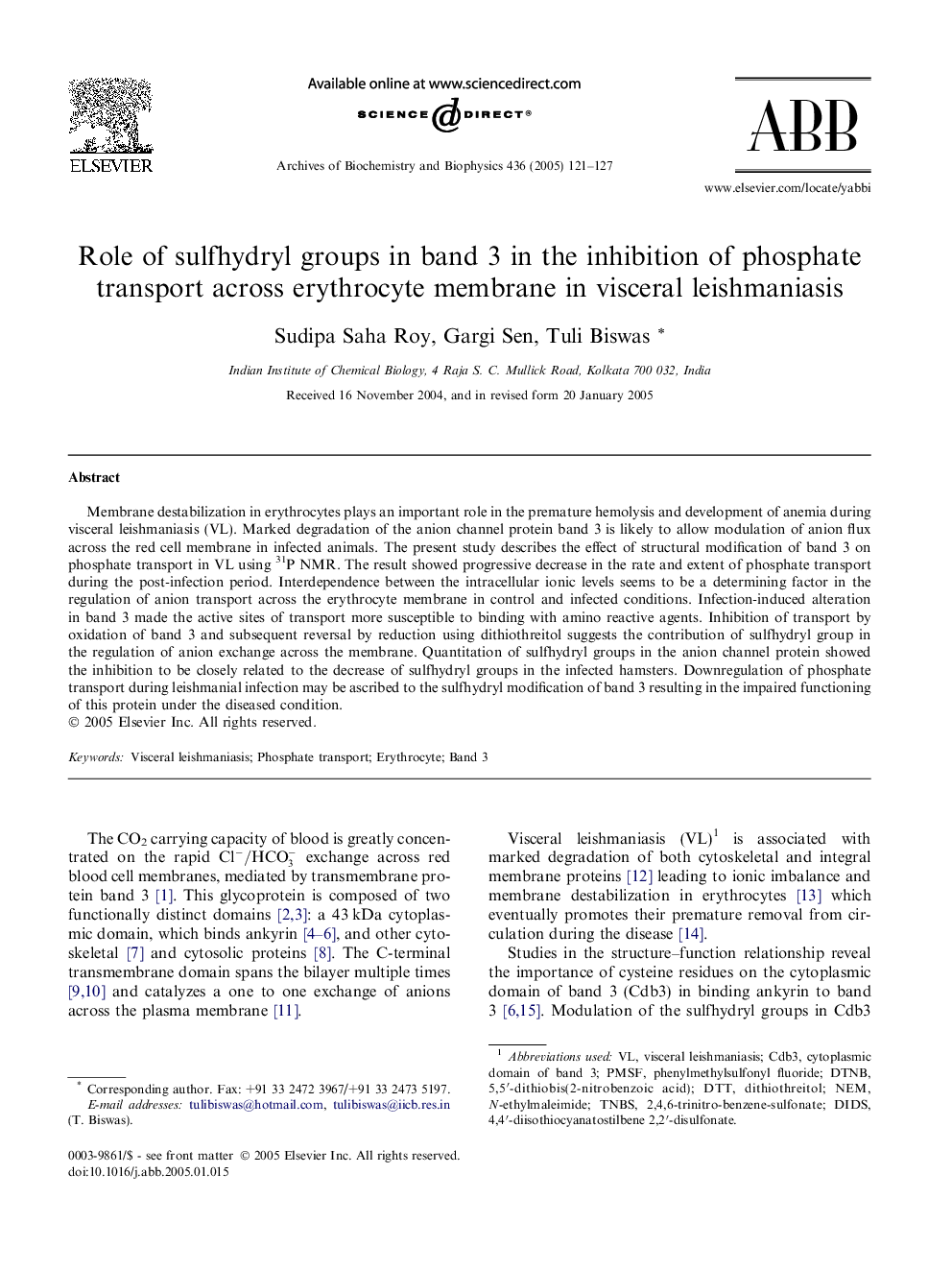| Article ID | Journal | Published Year | Pages | File Type |
|---|---|---|---|---|
| 9882273 | Archives of Biochemistry and Biophysics | 2005 | 7 Pages |
Abstract
Membrane destabilization in erythrocytes plays an important role in the premature hemolysis and development of anemia during visceral leishmaniasis (VL). Marked degradation of the anion channel protein band 3 is likely to allow modulation of anion flux across the red cell membrane in infected animals. The present study describes the effect of structural modification of band 3 on phosphate transport in VL using 31P NMR. The result showed progressive decrease in the rate and extent of phosphate transport during the post-infection period. Interdependence between the intracellular ionic levels seems to be a determining factor in the regulation of anion transport across the erythrocyte membrane in control and infected conditions. Infection-induced alteration in band 3 made the active sites of transport more susceptible to binding with amino reactive agents. Inhibition of transport by oxidation of band 3 and subsequent reversal by reduction using dithiothreitol suggests the contribution of sulfhydryl group in the regulation of anion exchange across the membrane. Quantitation of sulfhydryl groups in the anion channel protein showed the inhibition to be closely related to the decrease of sulfhydryl groups in the infected hamsters. Downregulation of phosphate transport during leishmanial infection may be ascribed to the sulfhydryl modification of band 3 resulting in the impaired functioning of this protein under the diseased condition.
Related Topics
Life Sciences
Biochemistry, Genetics and Molecular Biology
Biochemistry
Authors
Sudipa Saha Roy, Gargi Sen, Tuli Biswas,
